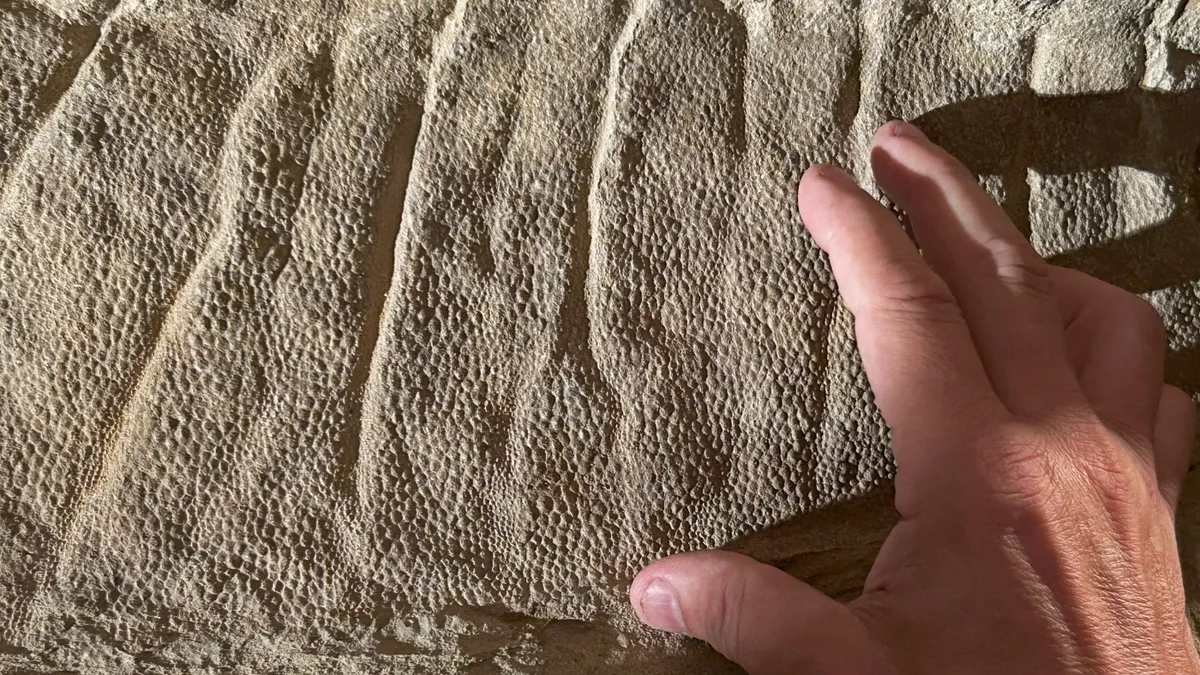
You might be surprised to learn that a paleontologist searching for 66-million-year-old fossils would delve into a rancher's family history. However, this is precisely what Paul Sereno, a renowned paleontologist from the University of Chicago, did while investigating the location of a significant dinosaur mummy unearthed in 1908. His groundbreaking research, published in the journal Science, sheds new light on the duck-billed Edmontosaurus annectens, a colossal herbivore from the Cretaceous period.
Sereno and his team embarked on a meticulous journey to unveil the details of this dinosaur's appearance, revealing intricate features such as its hooves and spiky tail. Their research focused on understanding how a delicate clay template can lead to the preservation of dinosaur mummies. But before they could analyze the specimens, they needed to locate them, a task that involved extensive research through archives and historical photographs of the original excavations.
In his quest for the infamous site where Charles Sternberg discovered the dinosaur mummy in eastern Wyoming, Sereno uncovered historical notes and photographs that detailed Sternberg's route during a time when travel was reliant on horse-drawn carriages. Among these references was mention of a town called Warren, Wyoming, which appeared to be lost to time. Seeking answers, Sereno reached out to local ranchers, one of whom shared that his great-grandmother once served as the postmaster of Warren. This connection proved invaluable, providing Sereno with vital clues to estimate the distance to the location of the 1908 mummy discovery.
The area where Sereno conducted his research has been dubbed the mummy zone, recognized for its exceptionally thick layers of river sand that preserved the remains of dinosaurs and provided critical insights into their biology. As technicians carefully removed sand grains from the Edmontosaurus specimens, Sereno was astounded by the findings. He likened a mummy to a thin mask of the dinosaur's body, similar to the clay used for facial cleansing, emphasizing that what they discovered was not a mere replacement of the actual skin but rather a crucial template.
“For once, we know what a large dinosaur looks like from head to toe,” Sereno stated, highlighting the completeness of the findings, which capture features from the bill at the front to the hooves and the crest on the back, down to the spikes on the tail. While many details were unveiled, one mystery remains: the color of the dinosaur.
The research focused on two key specimens: an adult affectionately known as Ed Sr. and a juvenile termed Ed Jr., which holds the distinction of being the only juvenile dinosaur mummy ever found. Sereno's study garnered attention from other experts in the field, including Clint Boyd, the paleontology program manager at the North Dakota Geological Survey. Boyd, who oversees his own Edmontosaurus specimen, Dakota the Dinosaur Mummy, praised Sereno's work, particularly noting the beauty of the dinosaur's feet.
Boyd clarified that terminology in the field could often confuse the general public, especially when discussing the nature of these mummies, which differ vastly from Egyptian mummies. He explained that the term hooves refers to structures similar to those seen in rhinoceroses, not horses, emphasizing the unique characteristics of Edmontosaurus.
Both Sereno and Boyd agree that this study establishes a crucial baseline for future research on dinosaur mummies, enabling scientists to compare findings across different specimens. Boyd described Sereno's paper as “a very thorough study” and noted its importance in advancing paleontological knowledge.
This research is not Sereno's first foray into dinosaur discovery. His lifelong passion for paleontology was ignited during a visit to the American Museum of Natural History in New York, where the original 1908 specimen is housed. “That was when I decided to be a paleontologist,” Sereno recalled, reflecting on how his career has brought him back to the site of the original discovery over a century later.
Sereno's message to young dinosaur enthusiasts is clear: the journey of discovery is far from over. He encourages budding paleontologists to embrace their curiosity, stating, “If you’re an enthused kid, thinking maybe we found everything, no, we have not. Plenty of work remains to make new discoveries and solve more mysteries about how dinosaurs lived.” According to Sereno, the next two generations of paleontologists will uncover even more about the ancient past and the fascinating world of dinosaurs.